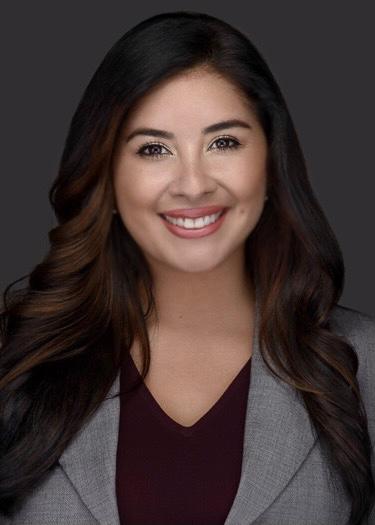By: DeAnna Diaz, DO
Director’s Note: Dr. DeAnna Diaz, a pathology resident and former participant in the FACTS elective, interviewed Rebekah,* a woman who began taking hormonal birth control in high school to address heavy cycles. Since then, Rebekah discovered fertility awareness-based methods (FABMs) and has been using these methods for 15 years of marriage. It’s the only family planning method she wholeheartedly recommends. Now that Dr. Diaz has learned more about FABMs herself, she notes how charting a woman’s cycle provides both women and couples genuine empowerment in their health and reproductive decisions. Rebekah now prefers the Marquette method, but there are a myriad of options to choose from. The FACTS online CME course is a great resource to learn more about the various FABMs and their clinical applications. Use the code HOLIDAYCME2023 and enroll by December 31st to save 10% on the registration fee.
Meet Rebekah
Rebekah* has been using fertility awareness-based methods (FABMs) for the entirety of her 15-year marriage. She was initially uneducated and only loosely understood the concept of avoiding a fertile window to prevent pregnancy. She believed that if she tracked the dates of her cycles, the 5-7 day window of fertility would be accurate based solely on the calendar. However, after surprise pregnancies and miscarriages, she ultimately encountered several modern FABMS and now shares the story of how Marquette became her preferred method.
Why FABMS?
Rebekah was started on hormonal birth control in high school to “help clear up her skin” and address her heavy flow cycles. She said it felt like a bandaid for her symptoms, without really addressing the causes of her heavy flow or skin issues. Furthermore, it caused various side effects, including emotional changes and weight gain, so she discontinued using it. Once she and her husband were married, she knew she also did not want to use condoms or any other barrier method. The couple wanted to wait to start a family, however, and Rebekah assumed that she could easily pinpoint her fertile days to postpone pregnancy by simply tracking the days of her cycle.
Rebekah’s FABM Journey Begins
In the beginning, Rebekah attempted to chart her cycle but merely entered her dates and assumed she was ovulating right in the middle. This method of “charting” is distinct from modern FABMs as her approach did not include observations of cervical fluid, basal body temperature, or hormone levels, which reflect the physiology of sperm longevity related to egg fertilization. As a result, she quickly conceived her first son and then had a daughter just 16 months later. Since her husband was frequently deployed in the early years of their marriage, they were ready to try again upon his return. She got pregnant with their third, but it soon resulted in a miscarriage. At this point, Rebekah became interested in learning more about other methods of family planning because she and her husband wanted to have the option of spacing out future pregnancies.
At the time, their military post offered a class on the Sympto-Thermal Method. Rebekah signed up to learn more and was soon overwhelmed by how little she knew about her own body, her cycles, and how much information was available via charting. She also expressed surprise that FABMs had never been mentioned by any of her OBs. Despite having been a patient of at least three different practices, no one had offered any information beyond hormonal birth control, an IUD, or permanent sterilization. Following the class, Rebekah and her husband successfully avoided pregnancy for three years, even during the difficult postpartum and nursing stages.
“She also expressed surprise that FABMs had never been mentioned by any of her OBs despite having been a patient of at least three different practices.”
After having five children, the couple was ready for a pause, perhaps permanently, but they needed more in-person support. For Rebekah, the Sympto-Thermal Method has its disadvantages, especially tracking her daily temperature in addition to recording mucus. They continued to look for better methods in line with both their faith and personal experience.
Encountering Marquette: Her Preferred Method
Finally, Rebekah found a group of women practicing the Marquette Model, one of whom was a nurse that was very open to looking at her charts and answering questions. Rebekah then decided to switch practices, driving 75 minutes to find a medical office that utilized FABMs exclusively. It was a dream come true: They read her charts, connected the couple with a Marquette instructor, and equipped them with the support they needed. She says that charting with Marquette helped her have a greater awareness of her body and avoid the traditional alternatives she believed to be counter to a woman’s normal cycle.

“Rebekah then decided to switch practices, driving 75 minutes to find a medical office that utilized FABMs exclusively. It was a dream come true: They read her charts, connected the couple with a Marquette instructor, and equipped them with the support they needed.”
Hopeful Future Directions
Rebekah turns 40 this year and has begun to notice more cycle irregularity. She is currently nine weeks pregnant with their seventh child but is hopeful she will be able to navigate postpartum and perimenopause with FABMs.
Rebekah’s fertility journey has shaped the size of her family, so she explained that it’s hard to say whether or not she would have done anything differently. Fifteen years ago, there was less access to information about FABMs, and her journey has taught her about her body, her health, and her sexuality. She had no idea how many ailments go unrecognized or untreated when masked by birth control. In her experience, FABMs are the only form of family planning she would recommend. She is currently educating her eldest daughter, a 13-year-old, on FABMs and is happy to see greater accessibility to these methods for both health-monitoring and family-planning applications. Rebekah emphasized the importance of support in learning about FABMs, as well as education on the “why” behind FABMs and potential risks of other methods.
“Fifteen years ago, there was less access to information about FABMs, and her journey has taught her about her body, her health, and her sexuality.”
Key Takeaways as a Medical Student
Following the FACTS elective and my interview with Rebekah, I have gained an immense education in FABMs and a more comprehensive understanding of the pros and cons of the various methods, particularly the Marquette Model. Like Rebekah, it also brings me joy to see more education available to women in these methods, and we both hope for further advancements in the coming years. Our conversation also underscored the importance of educating medical professionals in these methods, as many patients may prefer natural methods to contraceptives or prescribed birth control. Lastly, I have also gained a better understanding of the unique motivations of a woman or couple when pursuing FABMs.
*Names have been changed to respect the privacy of the interviewee. All information is shared with permission.
ABOUT THE AUTHOR
DeAnna Diaz, DO
DeAnna Diaz is a PGY1 Pathology medical resident at Rutgers Robert Wood Johnson, New Brunswick. She attended and graduated Philadelphia College of Osteopathic Medicine in Philadelphia PA while she took the FACTS elective. She has also completed a two year research fellowships in dermatology/ pathology at University of Pennsylvania. She is interested in dermatopathology and women’s health, health equity and education. She enrolled in the FACTS elective to gain a better understanding of natural family planning methods and manners in which to share these methods with future patients so they can feel more empowered over their health and reproductive decisions. She interviewed a patient using FABMs and discussed her journey.
Inspired by what you read?
You can support the ongoing work of FACTS here. To connect with a member of our team, please email de*********@*****************ty.org. Interested in becoming an individual or organizational member? You can learn more and register here. To discuss with a member of our team, please email me********@*****************ty.org.






